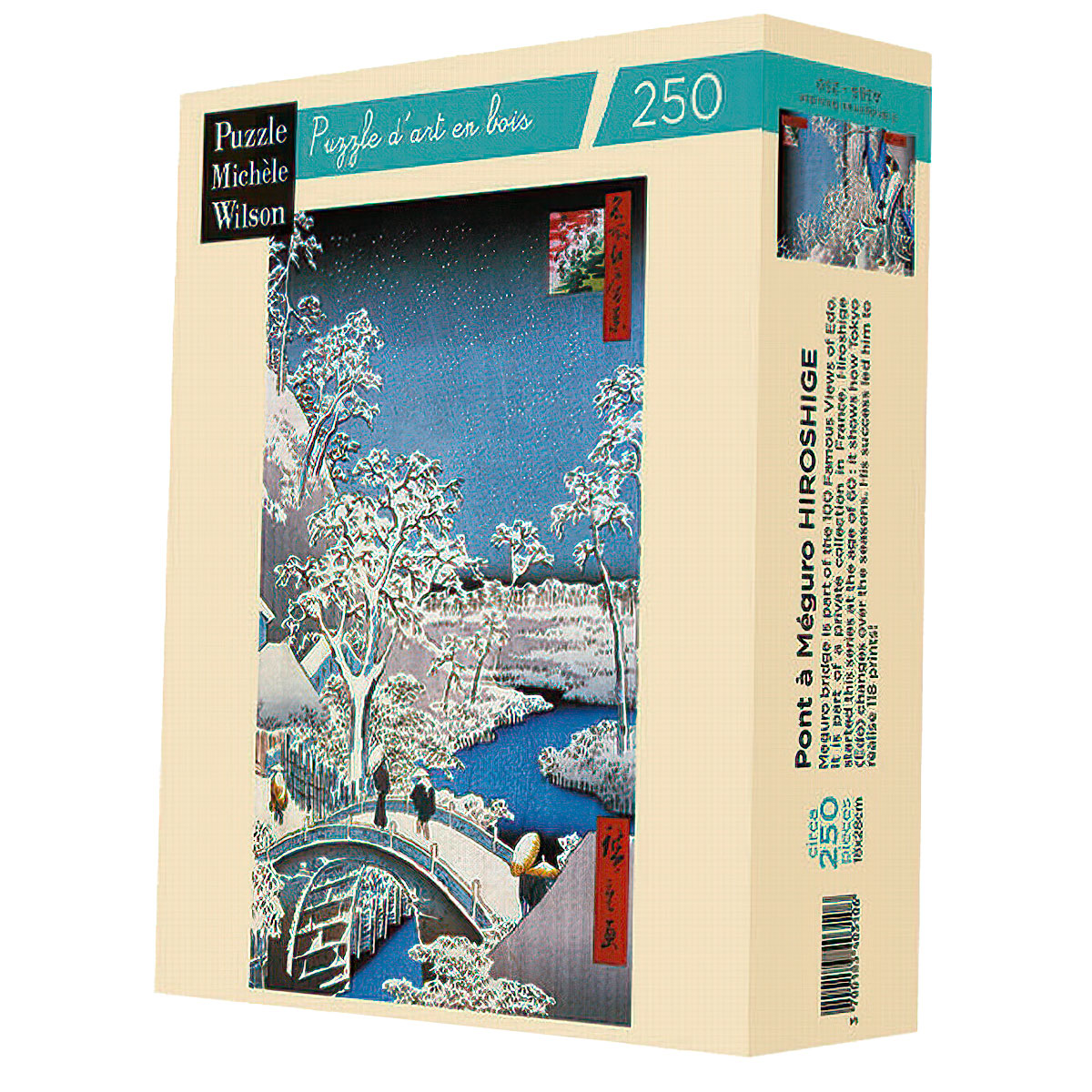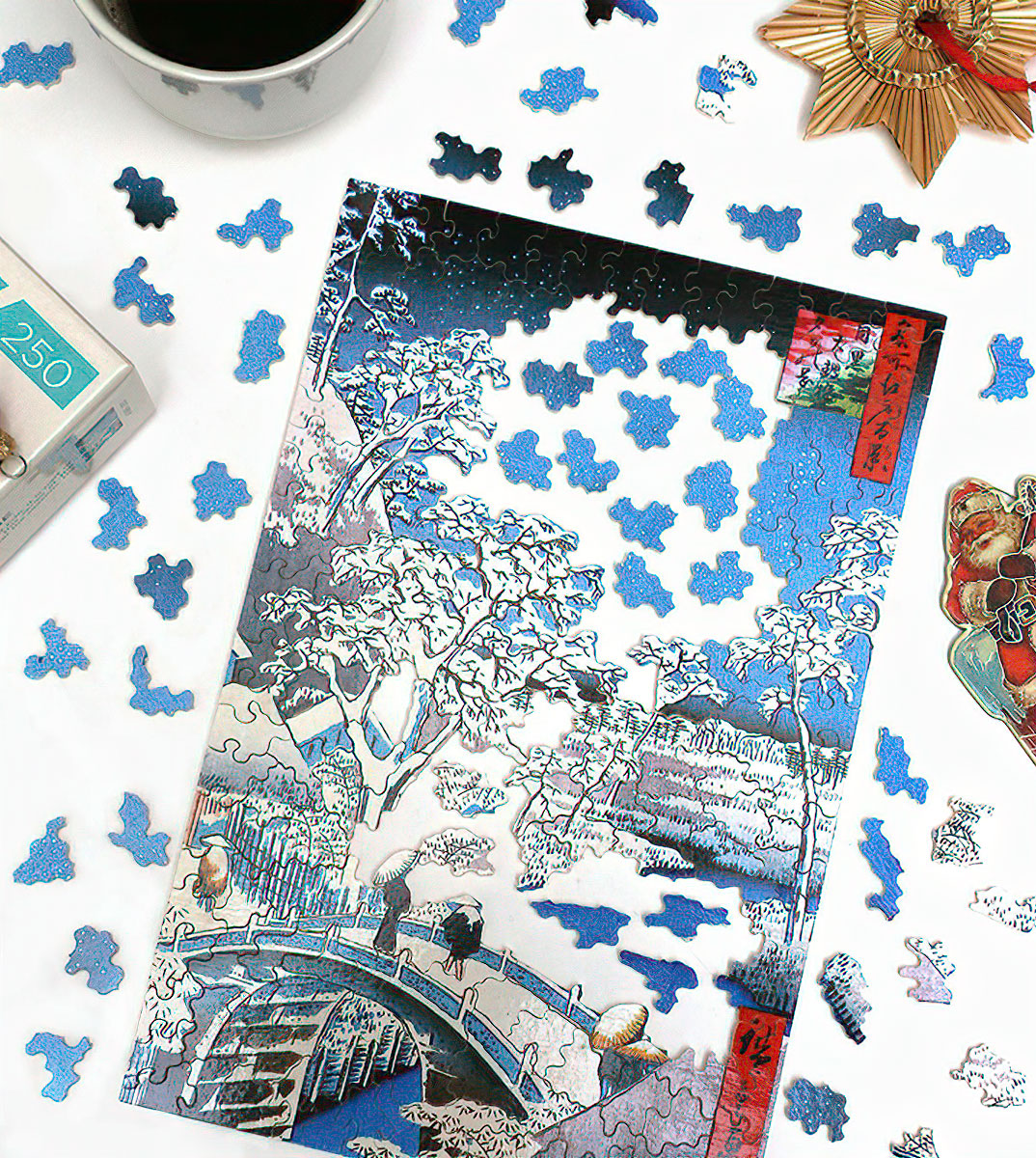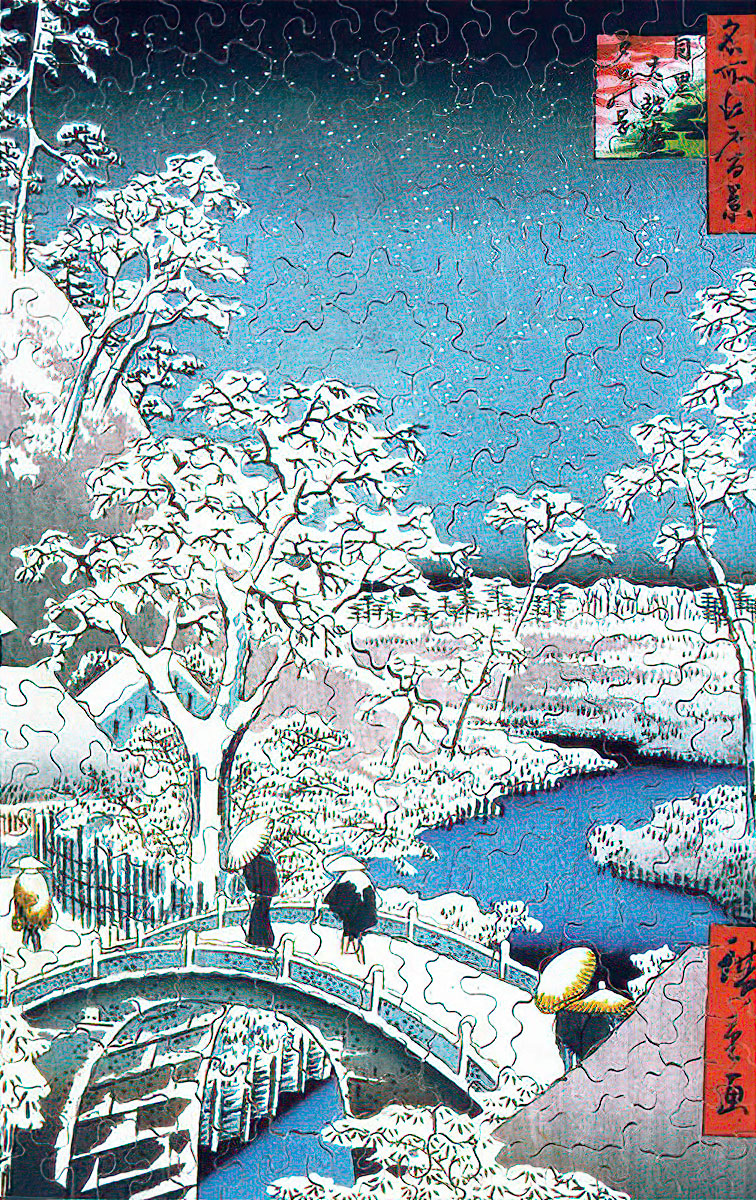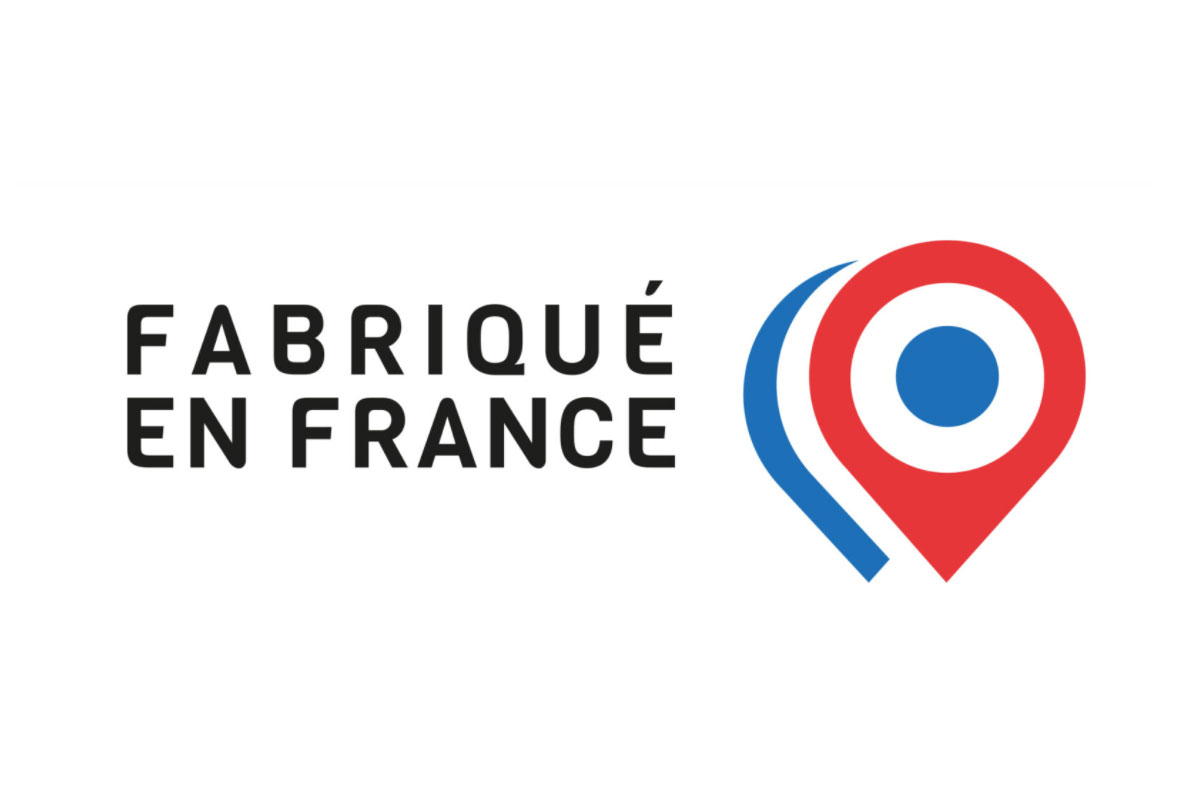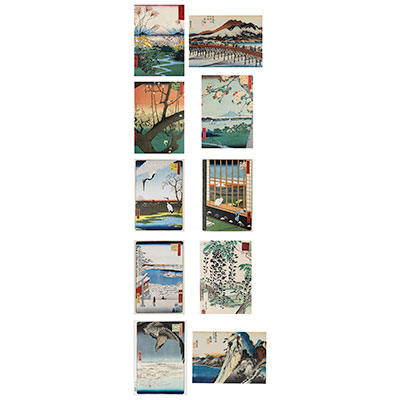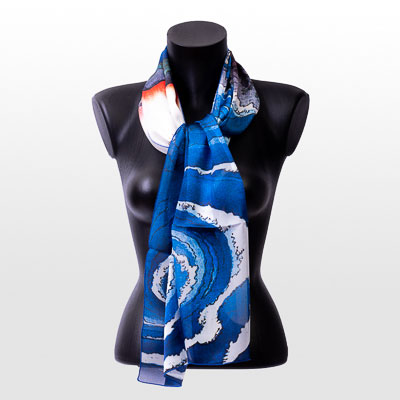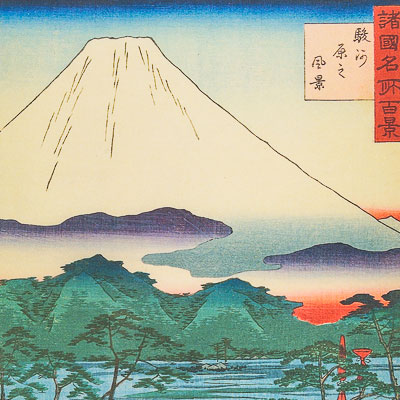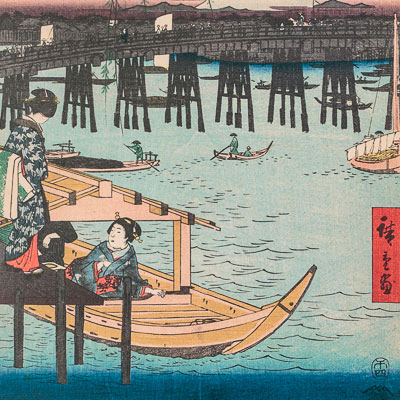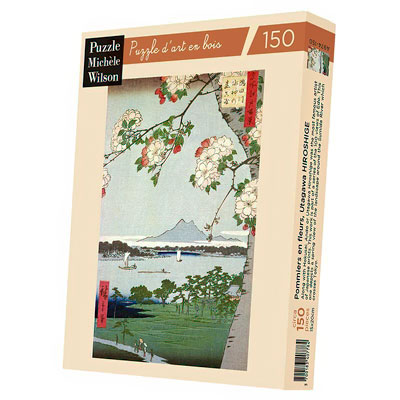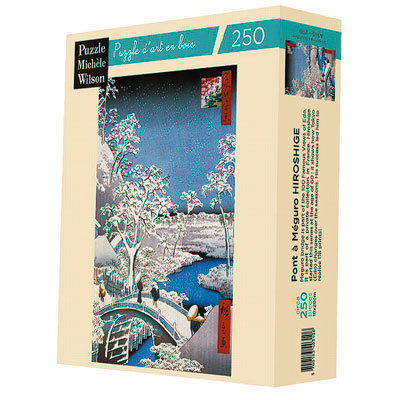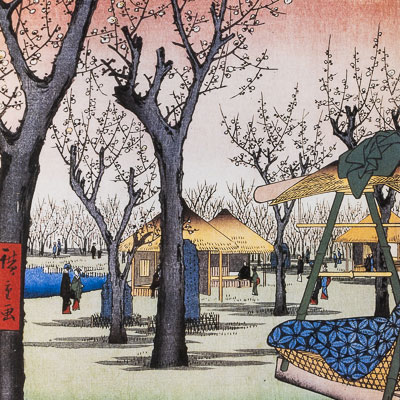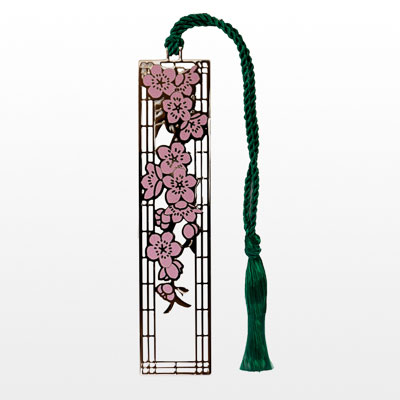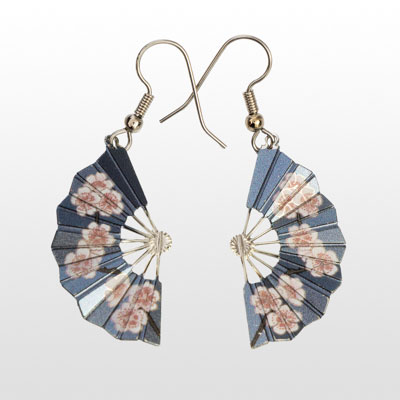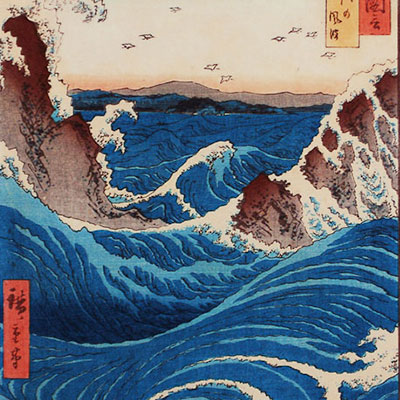Tel : (+33) 4 94 63 18 08
9am - 6pm from Monday to Sunday
All products Utagawa Hiroshige • Products of the topic Japan
Hiroshige Wooden Puzzle : The Drum Bridge and Sunset Hill at Meguro (Michèle Wilson)
REF : PMW-HIRO-04
In stock
Only 1 in stock
Unavailable
89,00 €
Wooden jigsaw puzzle Utagawa Hiroshige : "The Drum Bridge and Sunset Hill at Meguro"
Publisher : Michèle Wilson
Wooden Puzzle 250 pieces for adults.
Dimensions of the puzzle once completed : 18 x 28 cm
Ukiyo-e
Ukiyo-e is a style of Japanese painting and woodblock printing that flourished during the Edo period (1603-1868). The word "Ukiyo-e" means "pictures of the floating world," and refers to the Buddhist belief that the material world is fleeting and unsatisfactory. Ukiyo-e works were primarily intended for a middle-class audience and were often inspired by everyday life, leisure, and entertainment of the time. The earliest Ukiyo-e works were produced in the 17th century and developed during the 18th century through the use of woodblock printing, which allowed for mass production of prints. Ukiyo-e reached its peak in the 19th century, with artists such as Katsushika Hokusai and Utagawa Hiroshige becoming famous for their landscapes and scenes of everyday life in Edo. Hokusai, who lived from 1760 to 1849, is perhaps the most famous of the Ukiyo-e artists. He is known for his series of prints "The Thirty-six Views of Mount Fuji," which was widely admired and imitated by Western artists. Hiroshige, who lived from 1797 to 1858, was also a renowned Ukiyo-e artist, known for his landscapes and scenes of everyday life in Edo. In addition to painting and woodblock printing, Ukiyo-e also included other art forms such as wallpaper, kakemonos (silk painting scrolls), and surimono (printed greeting cards). These works were produced in large quantities and were widely accessible to a broad audience. Ukiyo-e has had a great influence on Western art, particularly on Impressionist and Post-Impressionist painters. Western artists were fascinated by the simplicity and beauty of Ukiyo-e compositions, as well as the use of bright colors and clear lines. Many Western artists collected Ukiyo-e works and were inspired by them in their own work. Ukiyo-e experienced a decline in the 19th century with the advent of photography and paper printing, which made woodblock and copperplate printing techniques obsolete. However, the influence of Ukiyo-e on Western and Japanese art continues to this day.
Discover the artist
Hiroshige Utagawa
Utagawa Hiroshige was a Japanese artist who lived in the 19th century and is known for his landscape and everyday life scene prints. He was born in Edo (present-day Tokyo) in 1797 and began his artistic career as a disciple of artist Utagawa Toyohiro. He quickly developed his own distinctive style, which was influenced by the landscape prints of the Kano school and the Western style of watercolor. Hiroshige is most famous for his series of prints "The Fifty-Three Stations of the Tōkaidō," which depicts the stations along the route between Edo and Kyōto. This series was very popular in Japan and widely disseminated abroad, helping to increase the popularity of Japanese art in Europe and America. Other important works by Hiroshige include "The Sea Voyage to China" (1833-34), which depicts ports in China and Korea, and "The Westward Journey" (1850-1858), which shows the landscapes of Japan from south to north. Hiroshige also produced series of prints on various subjects, such as seasons, festivals, animals, and legendary figures. His works are notable for their accuracy and realism, as well as their skillful use of color and space. Hiroshige died in 1858, but his work has continued to be celebrated and widely appreciated throughout the 20th century and beyond.
Hiroshige Utagawa
Utagawa Hiroshige was a Japanese artist who lived in the 19th century and is known for his landscape and everyday life scene prints. He was born in Edo (present-day Tokyo) in 1797 and began his artistic career as a disciple of artist Utagawa Toyohiro. He quickly developed his own distinctive style, which was influenced by the landscape prints of the Kano school and the Western style of watercolor. Hiroshige is most famous for his series of prints "The Fifty-Three Stations of the Tōkaidō," which depicts the stations along the route between Edo and Kyōto. This series was very popular in Japan and widely disseminated abroad, helping to increase the popularity of Japanese art in Europe and America. Other important works by Hiroshige include "The Sea Voyage to China" (1833-34), which depicts ports in China and Korea, and "The Westward Journey" (1850-1858), which shows the landscapes of Japan from south to north. Hiroshige also produced series of prints on various subjects, such as seasons, festivals, animals, and legendary figures. His works are notable for their accuracy and realism, as well as their skillful use of color and space. Hiroshige died in 1858, but his work has continued to be celebrated and widely appreciated throughout the 20th century and beyond.
Hiroshige Utagawa
Utagawa Hiroshige was a Japanese artist who lived in the 19th century and is known for his landscape and everyday life scene prints. He was born in Edo (present-day Tokyo) in 1797 and began his artistic career as a disciple of artist Utagawa Toyohiro. He quickly developed his own distinctive style, which was influenced by the landscape prints of the Kano school and the Western style of watercolor. Hiroshige is most famous for his series of prints "The Fifty-Three Stations of the Tōkaidō," which depicts the stations along the route between Edo and Kyōto. This series was very popular in Japan and widely disseminated abroad, helping to increase the popularity of Japanese art in Europe and America. Other important works by Hiroshige include "The Sea Voyage to China" (1833-34), which depicts ports in China and Korea, and "The Westward Journey" (1850-1858), which shows the landscapes of Japan from south to north. Hiroshige also produced series of prints on various subjects, such as seasons, festivals, animals, and legendary figures. His works are notable for their accuracy and realism, as well as their skillful use of color and space. Hiroshige died in 1858, but his work has continued to be celebrated and widely appreciated throughout the 20th century and beyond.
Hiroshige Utagawa
Utagawa Hiroshige was a Japanese artist who lived in the 19th century and is known for his landscape and everyday life scene prints. He was born in Edo (present-day Tokyo) in 1797 and began his artistic career as a disciple of artist Utagawa Toyohiro. He quickly developed his own distinctive style, which was influenced by the landscape prints of the Kano school and the Western style of watercolor. Hiroshige is most famous for his series of prints "The Fifty-Three Stations of the Tōkaidō," which depicts the stations along the route between Edo and Kyōto. This series was very popular in Japan and widely disseminated abroad, helping to increase the popularity of Japanese art in Europe and America. Other important works by Hiroshige include "The Sea Voyage to China" (1833-34), which depicts ports in China and Korea, and "The Westward Journey" (1850-1858), which shows the landscapes of Japan from south to north. Hiroshige also produced series of prints on various subjects, such as seasons, festivals, animals, and legendary figures. His works are notable for their accuracy and realism, as well as their skillful use of color and space. Hiroshige died in 1858, but his work has continued to be celebrated and widely appreciated throughout the 20th century and beyond.
Hiroshige Utagawa
Utagawa Hiroshige was a Japanese artist who lived in the 19th century and is known for his landscape and everyday life scene prints. He was born in Edo (present-day Tokyo) in 1797 and began his artistic career as a disciple of artist Utagawa Toyohiro. He quickly developed his own distinctive style, which was influenced by the landscape prints of the Kano school and the Western style of watercolor. Hiroshige is most famous for his series of prints "The Fifty-Three Stations of the Tōkaidō," which depicts the stations along the route between Edo and Kyōto. This series was very popular in Japan and widely disseminated abroad, helping to increase the popularity of Japanese art in Europe and America. Other important works by Hiroshige include "The Sea Voyage to China" (1833-34), which depicts ports in China and Korea, and "The Westward Journey" (1850-1858), which shows the landscapes of Japan from south to north. Hiroshige also produced series of prints on various subjects, such as seasons, festivals, animals, and legendary figures. His works are notable for their accuracy and realism, as well as their skillful use of color and space. Hiroshige died in 1858, but his work has continued to be celebrated and widely appreciated throughout the 20th century and beyond.




























































































